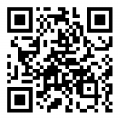在英語中,“for”和“to”這兩個詞經(jīng)常被使用,它們在語言中的作用和用法各不相同。本文將從語法和實際使用方面介紹這兩個詞的不同之處。
一、語法
for
“for”通常作為介詞使用,用于表示用途、目的、時間、原因等。它通常與名詞或動詞的“-ing”形式連用。
(1)表示用途:Tom bought a present for his mother on her birthday.
(2)表示時間:I have been waiting for an hour.
(3)表示原因:I don't eat meat for ethical reasons.
(4)表示目的:We are studying hard for the exam.
(5)表示比較:He is tall for his age.
to
“to”可以作為介詞、不定式符號、副詞等使用,用于表示方向、目的、結(jié)果等。它通常與名詞、動詞、形容詞連用。
(1)表示方向:I am walking to the station.
(2)表示目的:I am going to the store to buy some milk.
(3)表示結(jié)果:I am too tired to go out tonight.
(4)表示時間:I have to leave for work in 10 minutes.
(5)表示狀態(tài):She is close to tears.
二、實際用法
for
(1)用于表示時間段:I have been studying for 2 hours.
(2)用于表示原因:She is crying for joy.
(3)用于表示代替:I will do it for you.
(4)用于表示支持或反對:I am for the idea.
(5)表示數(shù)量:I will give you $10 for the book.
to
(1)用于表示位置:The dog ran to the park.
(2)用于表示時間:The party starts at 7p.m. and ends at midnight.
(3)用于表示比較:The cat is similar to the dog.
(4)用于表示目的:John went to the library to study.
(5)用于表示結(jié)果:The soup is too salty to eat.
for
三、常見誤區(qū)
for和to的混淆:有時候,人們會混淆“for”和“to”的使用。這種混淆會導致語法錯誤和意思不明確的情況。
例如:
I went to the park for a picnic.(我去公園野餐。)
I went to the park to play football.(我去公園踢足球。)
for和since的混淆:有時候,人們也會混淆“for”和“since”的使用。這種混淆會導致時間上的錯誤。
例如:
I have been studying for 3 hours.(我已經(jīng)學習了3個小時。)
I have been studying since 3 p.m.(我從下午3點開始學習。)
總之,“for”和“to”的使用非常廣泛,但需要注意它們的細微差別。了解它們的用法和語法規(guī)則,可以幫助我們更準確地表達自己的意思。







